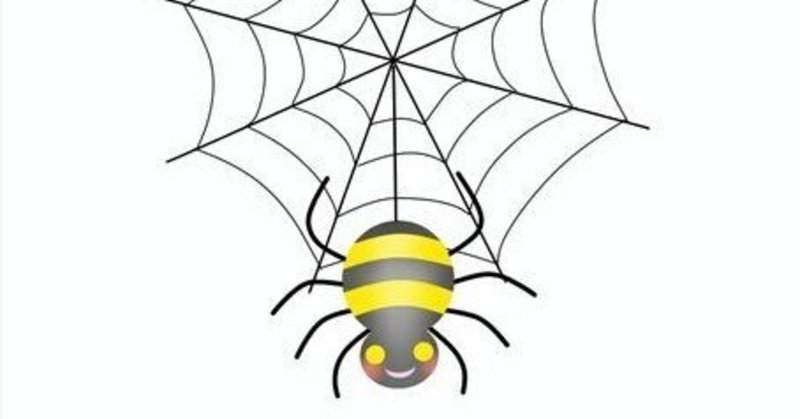
絹糸や蜘蛛の糸は液晶構造をしていることが初めて確立された
(はじめに)
皆さんが、繊維と云えば、身近にある化学繊維を真っ先に思い浮かべるでしょう。しかしながら、前世紀の初めまで、繊維といえば天然で取れる、絹糸や木綿などでした。前世紀の初め化学繊維のナイロンが発明されてから約100年がたちますが、いまだに、絹糸や蜘蛛の糸に匹敵するあるいはそれを越える強度の繊維は、なかなか見出せないでいるのが現状です。なぜ天然の繊維の蚕の絹(シルク)や蜘蛛の糸(スパイダーシルク) が、化学繊維より高い強度を示すのか、そけは、実は、シルクの構造がよくわかっていなかったからです。シルクの構造は、従来、結晶と非晶質部分との2相混合系をしているとか、ネマチック液晶状態ではないかとか言われてきましたが、どれも、その高強度を説明する事が出来ませんでした。今回、信州大学繊維学部では、応用生物学専攻のシルクが専門の研究者と、機能高分子専攻で液晶が専門の研究者とによる、数年に及ぶ密接な共同研究により、絹糸や蜘蛛の糸は柱状液晶構造であることが初めて解明されました。多くの人から見るとまるで異なる絹糸と液晶という異分野の共同研究が、全国で唯一の繊維学部でなされたことは、本当に意味があり画期的な事です。
蜘蛛の糸や絹糸が液晶状態である事を解明した論文が、2023年の7月に、これらの研究者の共同論文として出ましたので、下にご紹介いたします。皆さんが、天然シルク繊維を見るときに、自然観がからりと変わるものと思います。以下、少々専門的ですが、ご笑覧いただければ大変嬉しいです。
[ 1 ] ------------(日本語によるご紹介)------------
――スパイダーシルク(=蜘蛛の糸)は矩形のカラムナー液晶構造をしているーー
クモとカイコは、軽量性と生体適合性、および優れた機械的特性を示すタンパク質ベースのシルク(絹繊維)を紡ぎます 。 スパイダーシルク(=クモの糸)は、持続可能な構造材料の候補として注目を集めています。 組換えクモ糸のバルクスケールタンパク質発現と人工紡糸法の組み合わせにより、クモ糸の構造を持った繊維の生産が開発されました。 ゲノム編集技術の最近の進歩により、クモの糸成分を含む絹繊維を紡ぐカイコを作製することが可能になったのです。 しかし、天然のシルク繊維に匹敵する機械的強度を備えたシルク繊維を製造することは依然として困難です。 このような生体模倣したクモの糸の引張特性が低いのは、主に天然の絹繊維の分子集合体や、クモによる天然の絹の分泌物や繊維形成についての理解が不足しているためです。
クモとカイコは、絹タンパク質溶液を腺内に 25 ~ 30 wt% の高濃度で保持しており、そのような濃縮されたシルクタンパク質溶液は絹糸腺からのゲル化に役立ちます。 シルクタンパク質は腺内でミセル様構造 または液晶状態で保存され、シルクタンパク質を濃縮した状態で保持できることが提案されています。 最近、液晶顆粒モデルは紡糸プロセスにおける顆粒ベースのミクロフィブリルの形成を説明し、クモ糸繊維の階層構造につながります。 しかし、シルクタンパク質の液晶構造が繊維形成後も維持されるかどうかはまだ不明です。 絹フィルムは構造解析によく使用されていますが、このフィルムがクモやカイコの天然絹繊維の分子集合を再現できているかどうかは疑問です。 シルク繊維が溶液に溶解すると、シルク繊維からなるマイクロ/ナノフィブリルはランダムに解離し、ポリマーの多形性によりフィブリルは元の分子構造に集合しません。 したがって、天然の分子集合構造を解明するためには天然シルク繊維を使用することが不可欠です。これらの先行研究のいくつかは、 小角および広角 X 線散乱、偏光顕微鏡、透過型電子顕微鏡、原子間力顕微鏡を使用した観察により、シルク繊維が紡糸原液中で周期的 繊維軸に沿ったシルク繊維の構造と分子配列をとっており、液晶状態を形成する可能性があることを示唆しています。 しかしながら、どの研究も、合理的な説明なしに、シルク繊維の液晶状態は、ネマチック、コレステリック、または六角柱状液晶相として記述されてしまっています。 したがって、クモの糸繊維の液晶状態の詳細については、まだ議論が続いており、正しい結論が出ていません。
最近、太田らは、液晶を含むソフトマター(柔らかい物質)に適用できるX 線液晶構造解析の基本理論と手法を開発しました。この太田の理論によれば、液晶の分子集合体の次元は 1D、2D、[1D⊕1D]、[2D⊕1D]、[1D⊕1D⊕1D] に分類できます。ここでの表記は [2D⊕1D]、 [1D⊕1D] は部分空間の直和を意味します。 結晶相は 3D 空間ですが、液晶相はその部分空間です。 たとえば、[2D⊕1D] 次元空間は 3D 空間ではなく、2D 部分空間と 1D 部分空間の直和です。 なお、[2D⊕1D]液晶状態は二相分離しているのではなく単相を意味します。
従来、多くのスパイダーシルク(クモのシルク繊維 =蜘蛛の糸)のX線構造解析では、蜘蛛の糸は、三次元(3D)結晶状態と無次元アモルファス状態の2相分離しておりその混合状態だとされています。しかしながら、本研究で用いられる理論は、蜘蛛の糸は、そのような構造の混ざりものではなく、一つの液晶状態であるということが、数学の線形代数の観点から述べられています。
本研究では、太田らが開発した液晶解析手法を用いて、クモ糸繊維の液晶構造の詳細を調べています。 天然のスパイダーシルク(クモ糸)は、従来の研究では、その分子集合体は、3D 結晶領域と 0D 非晶質領域を含む二相モデル、または半結晶領域を含む三相モデルとして説明されてきました。しかしながら、非晶質領域は構造上の欠陥である可能性があり、クモ糸繊維の機械的強度を説明することが困難になります。 これに対し、本研究ではクモの糸繊維が液晶の一相、すなわちP21/a(p2gg)配置の矩形カラムナー液晶相によって集合している繊維であることを、初めて明らかにし、天然クモの糸の引張強度を、矛盾なく説明できるようになりました。 自然界では、多くの昆虫や動物が生活の中でタンパク質ベースの繊維を使用しています。 したがって、この研究で解明された、スパイダーシルク(クモ糸繊維)が一つのカラムナー液晶構造を持っていることは、スパイダーシルク(クモ糸繊維)形成の生物学的基礎を理解するのに役立つだけでなく、天然シルクに匹敵する機械的特性を備えたタンパク質ベースの繊維の製造にも貢献するでしょう。
(文献)
Spider dragline silk fibres maintain rectangular columnar liquid crystalline phase, Kenjiro Yazawa and Kazuchika Ohta, Liquid Crystals,
https://www.tandfonline.com/loi/tlct20
[ 2 ] ------------(Introduction in English)------------
Spiders and silkworms spin protein-based silk fibres that exhibit lightness and biocompatibility as well as excellent mechanical properties. Spider silk has garnered attention as a candidate of the structural material in the context of sustainable development goals. Combination of bulk-scale protein expression of recombinant spider silk and artificial spinning methods has developed the production of spider silk-like fibres. Recent advances in the genome editing techniques enable to produce silkworms that spin silk fibres with the spider silk component. However, it is still difficult to produce silk fibres with mechanical strength comparable to the natural counterpart. The lower tensile properties of the biomimetic spider silk are mainly due to the lack of the understanding of molecular assemblies of native silk fibres as well as the natural silk secretions and fibre formation by spiders.
Spiders and silkworms keep silk protein solution in their gland at high concentration between 25 and 30 wt %, and such a concentrated silk protein solution is served for a gelation out of the silk gland. It has been proposed that the silk proteins are stored in a micelle-like structure or liquid crystalline state in the gland, enabling to keep the silk protein in a concentrated manner. Recently, liquid crystalline granular model explains the formation of granule-based microfibrils in the spinning process and lead to a hierarchical structure of spider silk fibres. However, it is still unclear whether the liquid crystalline structure of the silk protein maintains after the fibre formation or not. Although silk film has often been used for the structural analysis, it is questionable whether the film can reproduce the molecular assembly in the native silk fibres of spider and silkworm. Once the silk fibres are dissolved into a solution, the micro/nano fibrils consisting of silk fibres are dissociated randomly and the fibrils do not assemble into the native molecular structure due to polymorphism of polymers. Therefore, it is indispensable to use the native silk fibres for characterising the natural molecular assembly structure. Observations using small- and wide-angle X-ray scattering, polarised light microscopy, transmission electron microscopy, atomic force microscopy have demonstrated the periodical structure and molecular alignment of the silk fibres along the fibre axis. Some of these precedent studies have suggested that the silk fibres may form liquid crystalline state in the spinning dope. The liquid crystalline states of silk fibres are described as nematic, cholesteric, or hexagonal columnar liquid crystalline phase without reasonable explanations. Therefore, the detail of the liquid crystalline state of the spider silk fibre is still under discussion.
Ohta et al. have developed the basic theory and methods for X-ray liquid crystal structural analysis, which can be employed for soft matters including liquid crystals. The theory mentioned from the viewpoint of linear algebra that a liquid crystalline state is not a combination of three-dimensional (3D) crystalline state and no-dimensional amorphous state, as previously reported in most of the conventional X-ray structural analyses for the spider silk fibres. Instead, the dimensionality of molecular assemblies for liquid crystals can be classified into 1D, 2D, [1D⊕1D], [2D⊕1D] and [1D⊕1D⊕1D], where the notation [2D⊕1D] or [1D⊕1D] means a direct sum of subspaces. The crystalline phase is a 3D space, whereas the liquid crystalline phase is its subspace. For instance, the [2D⊕1D] dimensional space is not a 3D space but a direct sum of 2D and 1D subspaces. Furthermore, the [2D⊕1D] liquid crystalline state does not mean two- phase but one-phase.
In this study, we have investigated the detail of liquid crystalline structure of the spider silk fibres by employing the analytical method for liquid crystals developed by Ohta et al. Conventional molecular assemblies of native spider silk fibres have been described as two-phase model containing 3D crystalline and 0D amorphous regions or three-phase model including semi-crystalline region. However, the amorphous region can be a structural defect, which makes it difficult to explain a mechanical strength of spider silk fibres. In contrast, we have revealed in this study that the spider silk fibres were assembled by one-phase of liquid crystal, namely, rectangular columnar liquid crystalline phase with P21/a (p2gg) arrangement, enabling to explain a tensile strength of natural spider silk fibres. In nature, many insects and animals use protein-based fibres in their life. Thus, the liquid crystalline structure of the spider silk fibres presented in this study will not only be useful to understand the biological basis of spider silk fibre formation but will also contribute to producing the protein-based fibres with the mechanical properties comparable to the natural silk fibres.
[Reference]
Spider dragline silk fibres maintain rectangular columnar liquid crystalline phase, Kenjiro Yazawa and Kazuchika Ohta, Liquid Crystals,
https://www.tandfonline.com/loi/tlct20
-----------------------------------------------------
2023年9月17日 随筆
*なお、冒頭のイラストは、下記のURLに掲載された、「さよ358さん」により描かれたフリー画像を、使用させて頂きました。
https://www.ac-illust.com/main/search_result.php?word=%E3%81%8F%E3%82%82%E3%81%AE%E7%B3%B8
この記事が気に入ったらサポートをしてみませんか?
